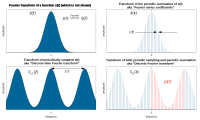
Photo from wikipedia
We investigate a reduced scaling full-potential DFT method based on the multiple scattering theory (MST) code MuST, which is released online (https://github.com/mstsuite/MuST) very recently. First, we test the accuracy by… Click to show full abstract
We investigate a reduced scaling full-potential DFT method based on the multiple scattering theory (MST) code MuST, which is released online (https://github.com/mstsuite/MuST) very recently. First, we test the accuracy by calculating structural properties of typical body-centered cubic (BCC) metals (V, Nb, and Mo). It is shown that the calculated lattice parameters, bulk moduli, and elastic constants agree with those obtained from the VASP, WIEN2k, EMTO, and Elk codes. Second, we test the locally self-consistent multiple scattering (LSMS) mode, which achieves reduced scaling by neglecting the multiple scattering processes beyond a cut-off radius. In the case of Nb, the accuracy of 0.5 mRy/atom can be achieved with a cut-off radius of 20 Bohr, even when small deformations are imposed on the lattice. Despite that the calculation of valence states based on MST exhibits linear scaling, the whole computational procedure has an overall scaling of about O(N1.6), due to the fact that the updating of Coulomb potential scales almost as O(N2). Nevertheless, it can be still expected that MuST would provide a reliable and accessible way to large-scale first-principles simulations of metals and alloys.
Journal Title: Frontiers in Chemistry
Year Published: 2020
Link to full text (if available)
Share on Social Media: Sign Up to like & get
recommendations!